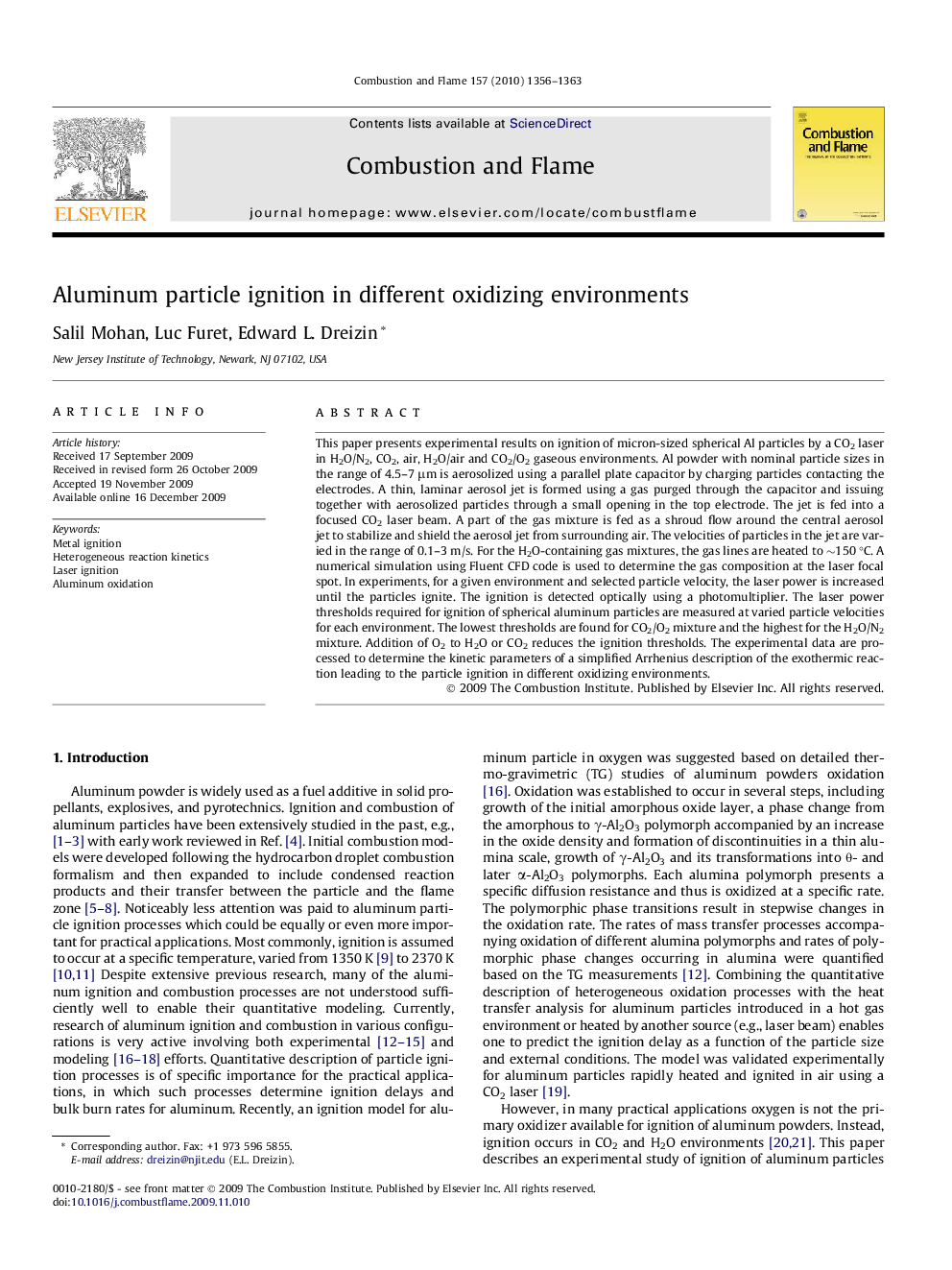| Article ID | Journal | Published Year | Pages | File Type |
|---|---|---|---|---|
| 169405 | Combustion and Flame | 2010 | 8 Pages |
This paper presents experimental results on ignition of micron-sized spherical Al particles by a CO2 laser in H2O/N2, CO2, air, H2O/air and CO2/O2 gaseous environments. Al powder with nominal particle sizes in the range of 4.5–7 μm is aerosolized using a parallel plate capacitor by charging particles contacting the electrodes. A thin, laminar aerosol jet is formed using a gas purged through the capacitor and issuing together with aerosolized particles through a small opening in the top electrode. The jet is fed into a focused CO2 laser beam. A part of the gas mixture is fed as a shroud flow around the central aerosol jet to stabilize and shield the aerosol jet from surrounding air. The velocities of particles in the jet are varied in the range of 0.1–3 m/s. For the H2O-containing gas mixtures, the gas lines are heated to ∼150 °C. A numerical simulation using Fluent CFD code is used to determine the gas composition at the laser focal spot. In experiments, for a given environment and selected particle velocity, the laser power is increased until the particles ignite. The ignition is detected optically using a photomultiplier. The laser power thresholds required for ignition of spherical aluminum particles are measured at varied particle velocities for each environment. The lowest thresholds are found for CO2/O2 mixture and the highest for the H2O/N2 mixture. Addition of O2 to H2O or CO2 reduces the ignition thresholds. The experimental data are processed to determine the kinetic parameters of a simplified Arrhenius description of the exothermic reaction leading to the particle ignition in different oxidizing environments.
